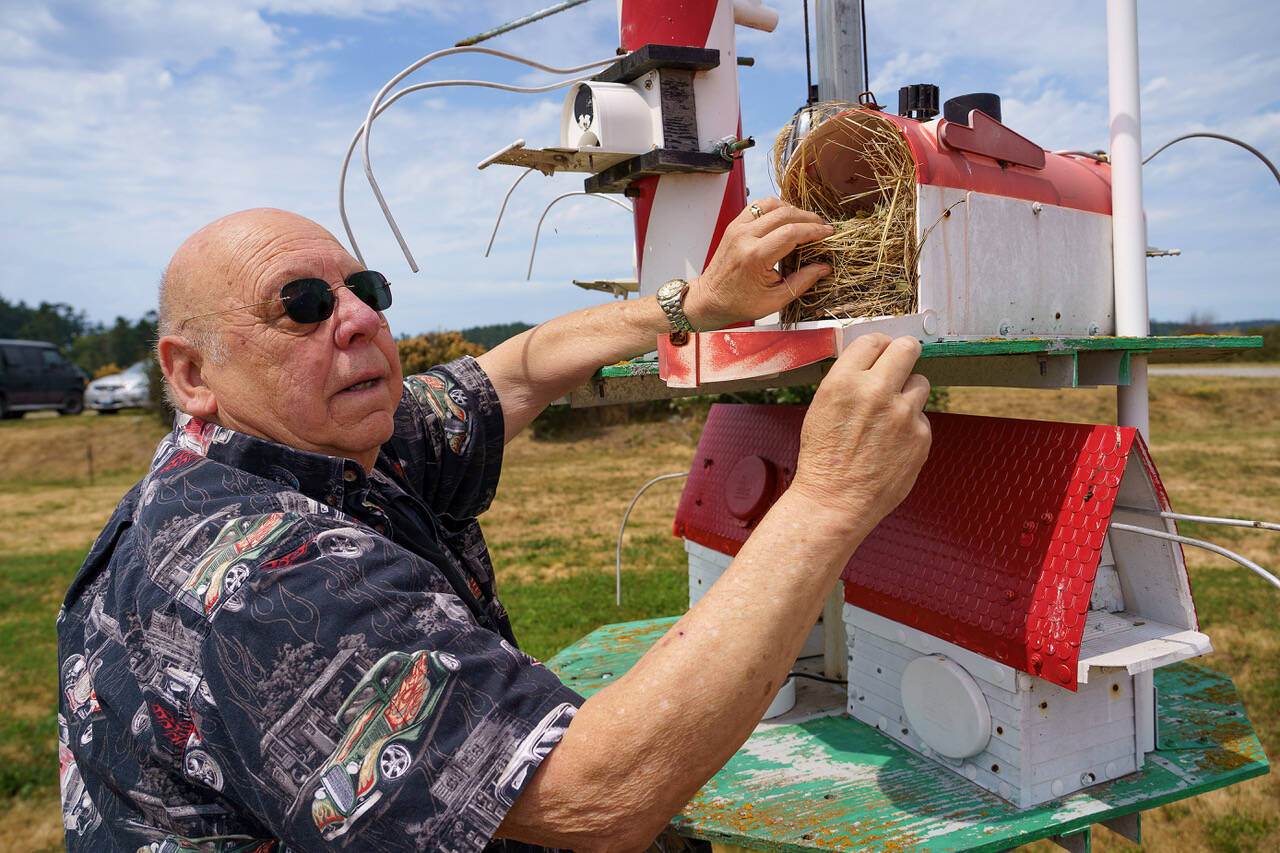For the past decade, a group of neighbors and friends on Central Whidbey have acted as landlords to a unique group of feathery tenants.
Mary Hollen’s fascination with purple martins began in 2014 when one showed up in Lagoon Point.
“I’m a member of Whidbey Audubon (Society) and a birder, so I recognized what it was,” she said.
The western North American subspecies population is low, estimated to be about 600 breeding birds statewide, according to the Washington Department of Fish and Wildlife. Purple martins like to nest in the cavities of old wood pilings, but they often depend on humans to provide habitat that is safe from predators.
Hollen started building houses for the birds, which return every year around Tax Day and leave shortly after Labor Day to fly 5,000 miles to Brazil for the winter. As is mostly the case in nature, the males are far flashier with purple plumage. Females and juvenile birds of both sexes are brown, making it difficult to tell them apart.
Babies began hatching in mid-July and some opened their eyes this week. They grow fast and feed on flies, dragonflies, butterflies, wasps, bees, beetles, spiders and grasshoppers, which parents catch because they can fly up to 150 feet high, more than any other type of swallow.
“It’s just a gradual process to where they’ve got enough feathers to fly, which usually takes 28 days from the time they’re hatched,” Hollen said.
Hollen learned more about the birds from the Western Purple Martin Working Group, which is led by a scientist in Nanaimo, British Columbia. She educated her neighbors and convinced them to join her in becoming purple martin landlords.
This includes Gary Hammer, who relocated his birdhouses after several years of no tenants, which may have been due to the nearby large tree that an owl was frequenting.
He attached the houses – some of which are old mailboxes – to a raised platform that can be seen from Callen’s Restaurant near the Coupeville ferry terminal.
“When I first put this up, people would ask me, ‘Is that a weather station?’” Hammer said with a laugh.
Last month, he lowered the cedar-lined houses to the ground to check for eggs and chicks.
“When there’s babies in here, I put the flag up,” he said.
A sign affixed to the platform reads, “If you build it, they will come.” The “Field of Dreams” quote seemed apt for the situation.
Owl guards prevent the large predators from landing and reaching a foot in to grab a purple martin chick. The crescent-shaped opening in the box deters starlings, which have longer legs, from taking over the houses.
At high tide, Hollen is able to access her purple martin houses, which are attached to the top of steel pilings on her dock. More than any other bird, she said, they seem to be aware of her and that she’s there to help them.
“They’ve got the most beautiful song you’ve ever heard,” she said.
According to the Washington Department of Fish and Wildlife, purple martins are identified as a Species of Greatest Conservation Need under the State Wildlife Action Plan. As Hollen pointed out, there is currently no funding for programs that identify and track the birds, so the exact population is unknown.
Deforestation and removal of wooden pilings is a threat to their survival. The latter issue has affected purple martins in the Seattle area, according to a recent Seattle Times article about the birds. It’s why landlords opt to build the special houses that purple martins can nest in year after year.
“I’d like to leave with something that the birds can continue when I’m no longer here,” Hollen said.
Every year, she publishes a newsletter on the status of the island’s population for the Whidbey Audubon Society. A fact sheet on the organization’s website gives a detailed history of the purple martin presence in Greenbank and Coupeville.
Birders have been known to flock to her neighborhood to catch a glimpse of the purple martins, especially around this time of year when they are busy feeding their young.



